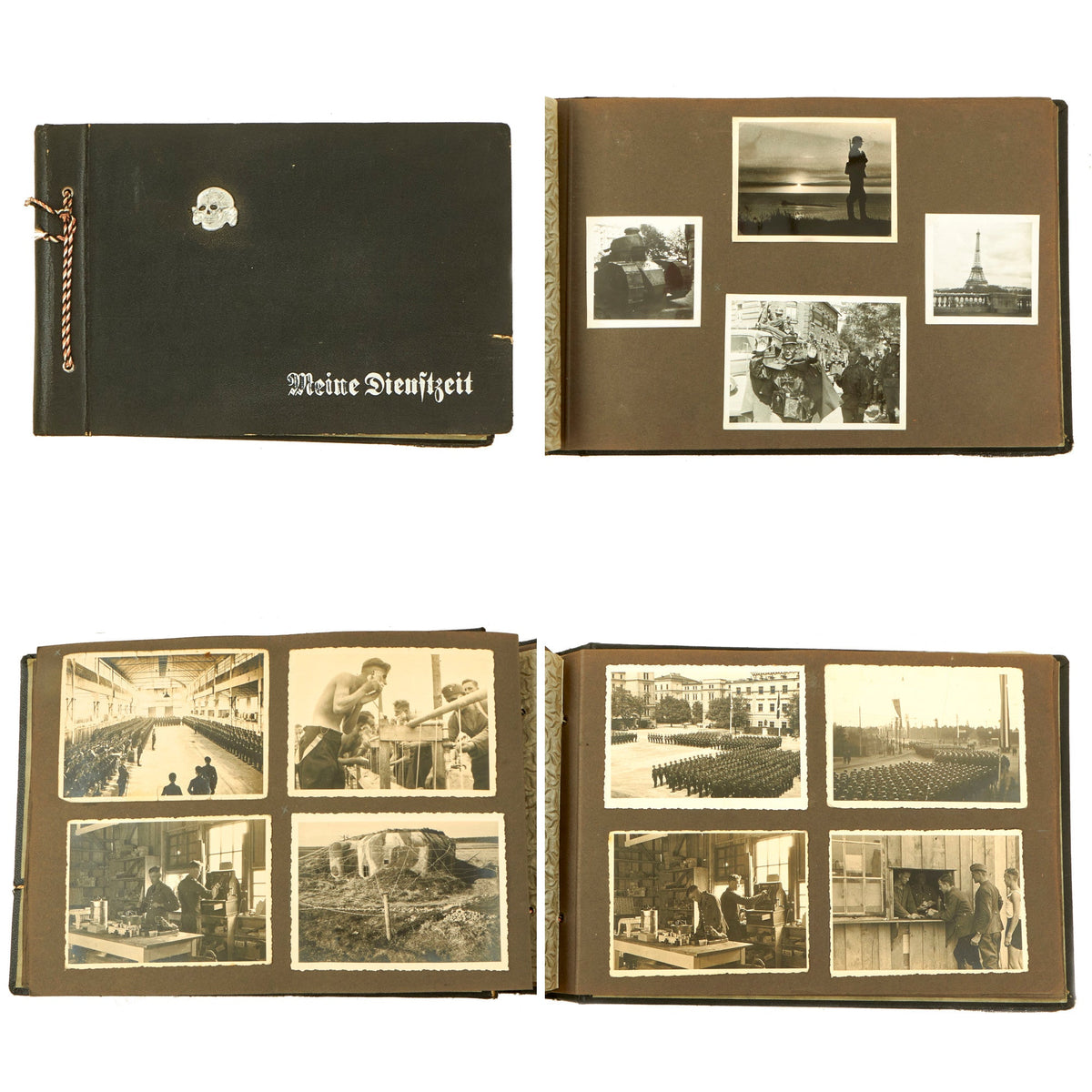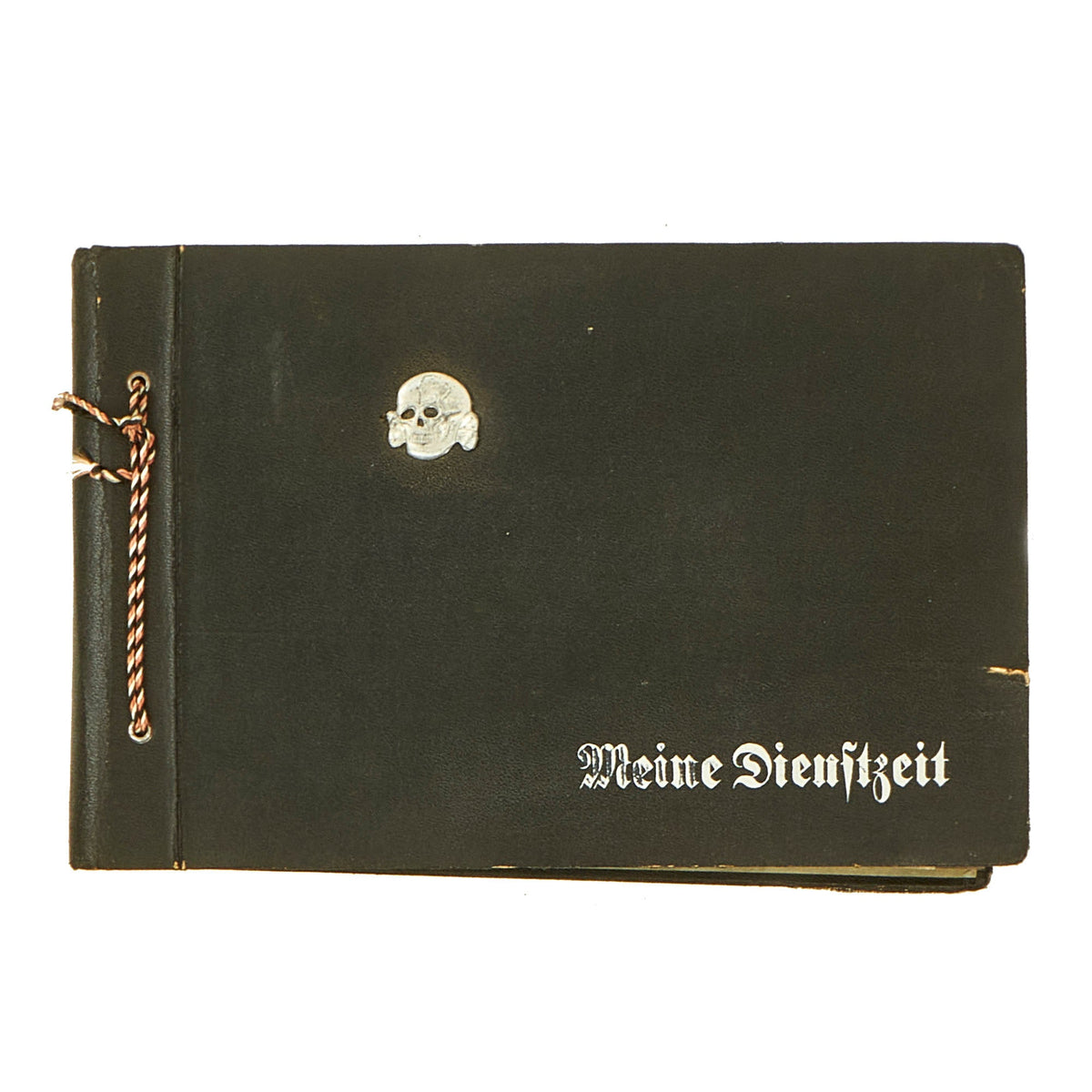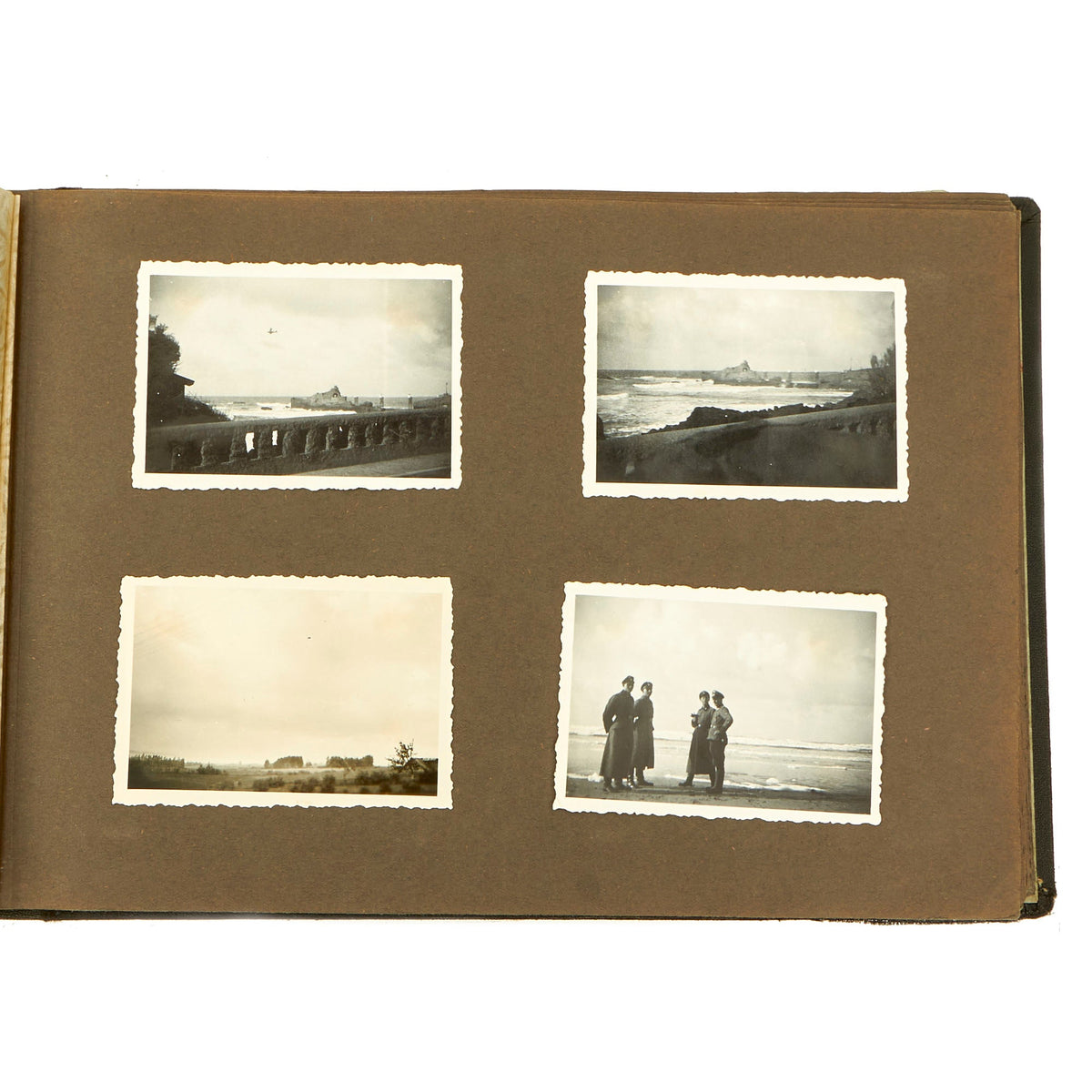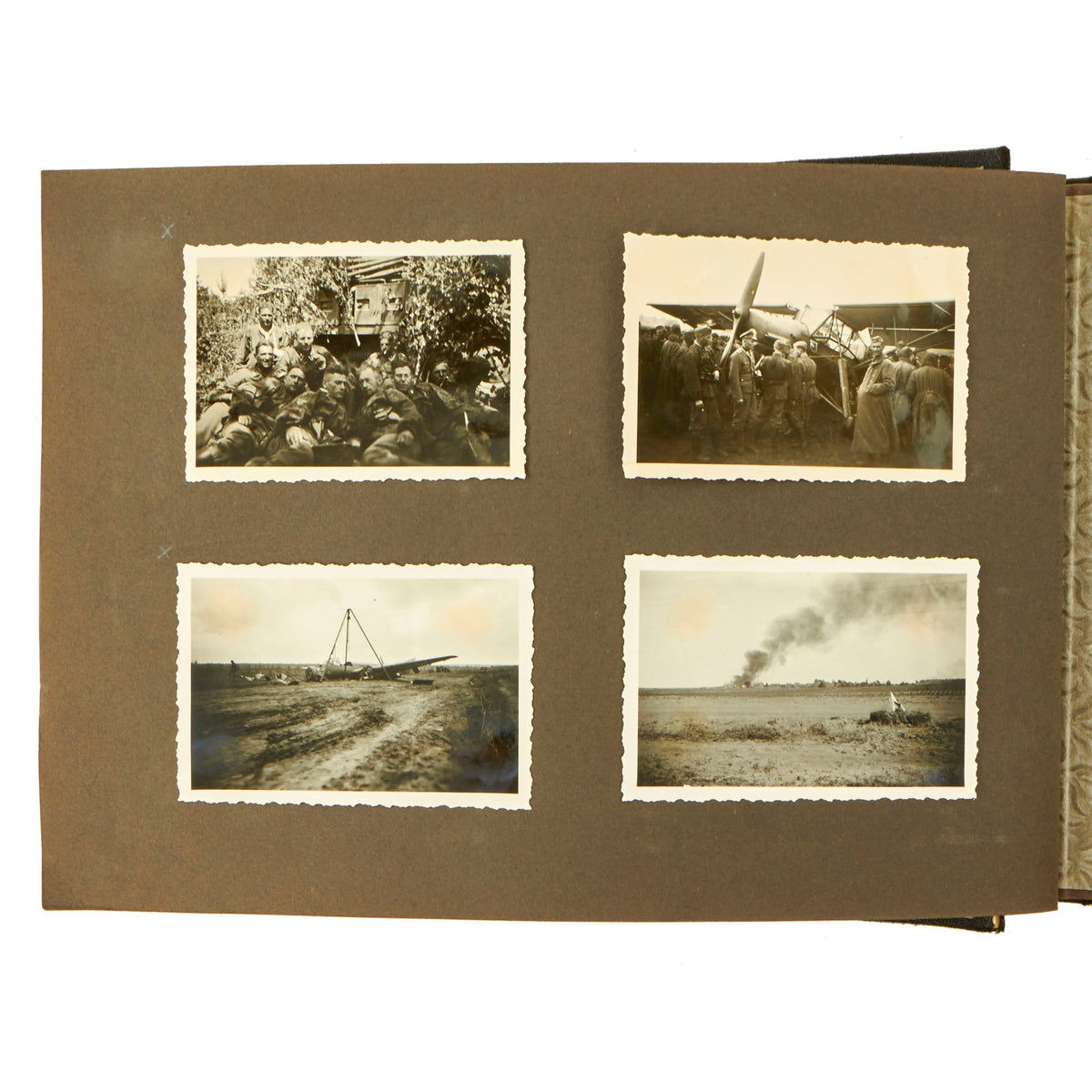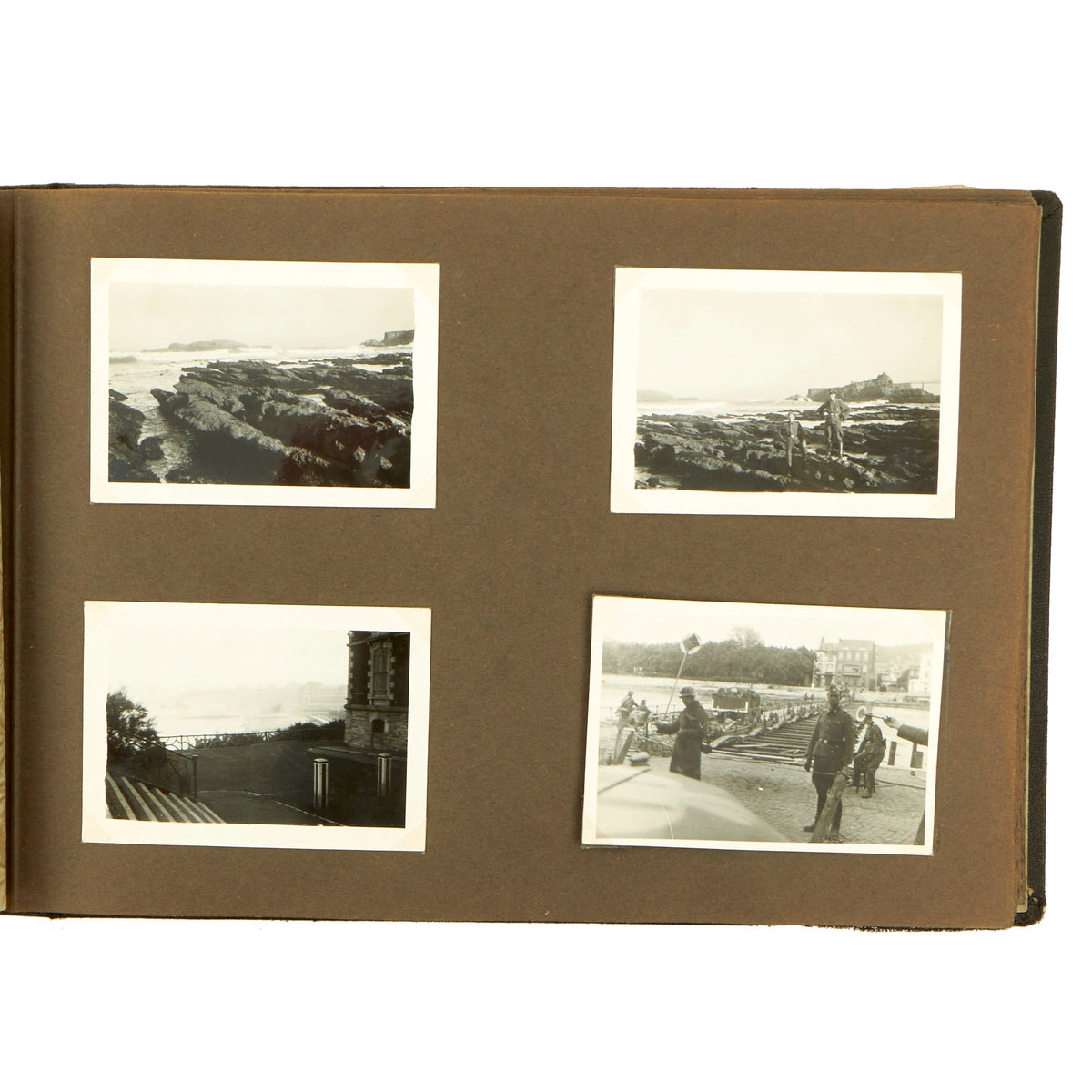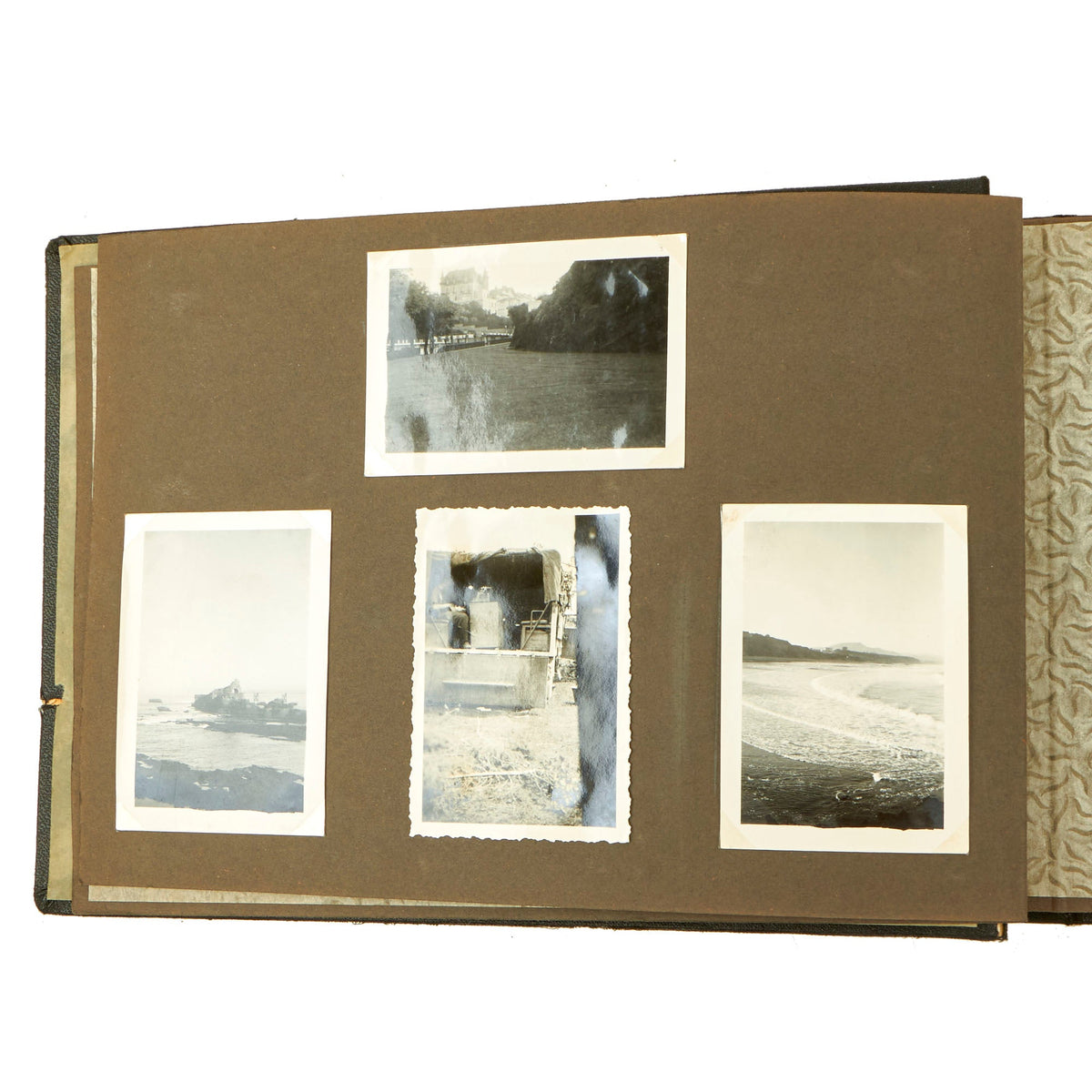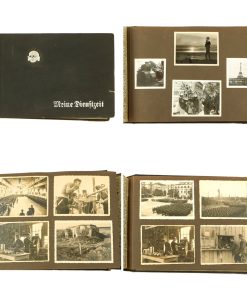Original German WWII 3rd SS Panzer Division Totenkopf “Meine Dienstzeit” Personal Photo Album – 155 Photos Original Items
$ 2.895,00 $ 723,75
Original Item: One-of-a-kind-set. The SS (Schutzstaffel – ‘Protection Squadron’) was originally formed in 1925, ostensibly to act as a small, loyal bodyguard unit to protect the Führer, Adolf H. Under the direction of the Reichsführer-SS Heinrich Himmler, the SS grew to be the most ruthless and feared organization of the 20th century. They were the vanguard of NSDAP and eventually controlled nearly every function of German life and much of Occupied Europe.
When WWII began in earnest, the SS-Verfügungstruppe (SS-VT) (SS Dispositional Troops) became the Waffen-SS (“Armed SS”), an official military branch of the SS organization. Its formations included men from NSDAP ruled Germany, along with volunteers and conscripts from both occupied and unoccupied lands.
Here we have a wonderful 3rd SS Panzer Division Totenkopf Waffen SS personal photo album, with what looks to be all photographs they took themselves, with possibly a few professional shots. It is covered with a lovely textured black leatherette cover, and there is a lovely metal Waffen SS Totenkopf (Death’s Head) Skull & Crossbones badge in the upper right corner. The lower right is embossed in silver with Meine Dienstzeit (My Service). The album measures approximately 12 1/4” x 8”. The inside cover has SS MAN – Ludwig Ralf written pen, a possible research avenue.
A total of 155 photographs fill the pages of this album, making it a treasure-trove of images taken from the viewpoint of a young, patriotic German soldier. These are contained on 19 pages, which are not captioned, and most pages are separated by “onion skin” separators. Almost all of the photos are attached using corner tabs, some of which are missing or have detached from the pages over the years.
The photo album looks to show Waffen SS soldiers in service in various locations, starting with France. There are numerous pictures of the Eifel Tower, as well as some beaches. There is also a very interesting page which looks to show German soldiers going into combat, with camouflage covers on their helmets. On this page there is also a soldier shown with a Czech ZB26 Machine gun, called the MG 26(t) when used in German service. There are battle scenes, including some relatively graphic photos showing dead soldiers.
The photos after this look to show France and other nearby occupied areas, with soldiers at ease. This definitely looks to have been during the early 1940s, after the relatively quick defeat of Western Europe. Later photos show defensive obstacles in place. Definitely some great historical research potential in these pages!
Historical records like this album have become priceless time capsules that provide an incomparable level of insight into the individual experience of the Second
World War, now that almost eighty years have passed.
The older albums such as these usually withstand the ravages of time. The leather or fabric covers may wear, but the pages stay well intact. The black paper albums of the early 20th century are more fragile, while the glue from magnetic albums can damage photographs. And, as with all old photographs, keep albums in a safe, climate controlled environment.
More on the 3rd SS Panzer Division “Totenkopf”:
This elite division of the Waffen-SS of NSDAP Germany during World War II formed from the Standarten of the SS-TV. Its name, Totenkopf, is German for “death’s head” – the skull and crossbones symbol – and it is thus sometimes referred to as the Death’s Head Division.
The division was formed through the expansion of Kampfgruppe Eicke, a battle group named – in keeping with German military practice – after its commander, Theodor Eicke. Most of the battle group’s personnel had been transferred to the Waffen SS from KZ camp guard units, which were known collectively as SS-Totenkopfverbände; others were former members of Selbstschutz: ethnic German militias that had committed war crimes in Poland.
The division became notorious for its brutality, and committed numerous war crimes, including the Le Paradis massacre.
Fast Shipping with Professional Packaging
Thanks to our longstanding association with UPS FedEx DHL, and other major international carriers, we are able to provide a range of shipping options. Our warehouse staff is expertly trained and will wrap your products according to our exact and precise specifications. Prior to shipping, your goods will be thoroughly examined and securely secured. We ship to thousands clients each day across multiple countries. This shows how we're dedicated to be the largest retailer on the internet. Warehouses and distribution centres can be located throughout Europe as well as the USA.
Note: Orders with more than one item will be assigned a processing date depending on the item.
Before shipping before shipping, we'll conduct a thorough inspection of the items you have ordered. Today, the majority of orders will be delivered within 48 hours. The delivery time will be between 3-7 days.
Returns
The stock is dynamic and we cannot completely manage it because multiple stakeholders are involved, including our factory and warehouse. So the actual stock may alter at any time. It's possible that you may not receive your order once the order has been made.
Our policy is valid for a period of 30 days. If you don't receive the product within 30 days, we are not able to issue a refund or an exchange.
You can only return an item if it is unused and in the same state as the day you received it. You must have the item in its original packaging.
Related products
Uncategorized
Uncategorized
Uncategorized
Uncategorized
Band of Brothers ORIGINAL GERMAN WWII Le. F.H. 18 10.5cm ARTILLERY PIECE Original Items
Uncategorized
Uncategorized
Uncategorized
Uncategorized
Uncategorized
Angolan Rebel 1970s era 60mm Inert Display Mortar from Angolan Civil War Original Items
Uncategorized
Uncategorized
Australian WWII Owen MK1 Machine Carbine SMG Custom Fabricated Replica with Sling Original Items
Uncategorized
Uncategorized
Uncategorized
Uncategorized
Uncategorized
Uncategorized
